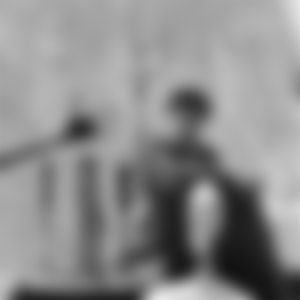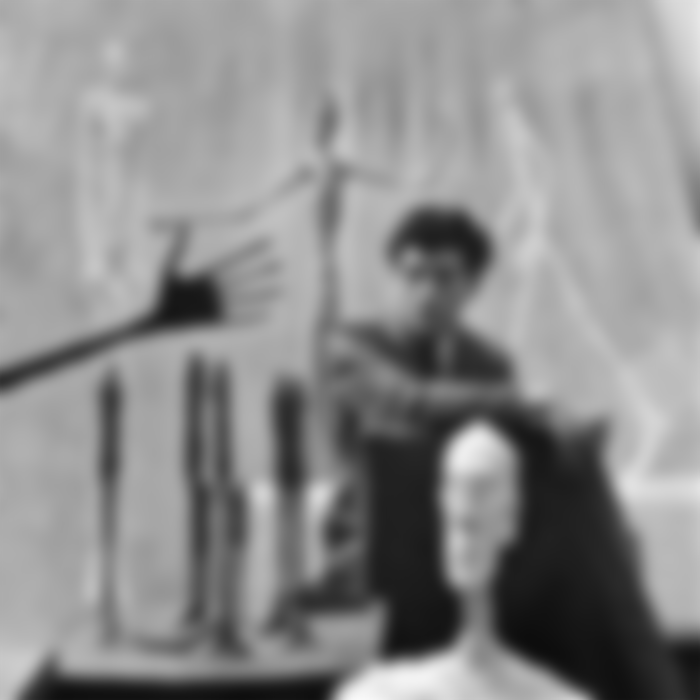Alberto Giacometti (1901-1966)
Alberto Giacometti was born on 10 October 1901 in the Town of Stampa in Canton Grigioni. His father, painter Giovanni Giacometti; His mother is Annetta Stampa. Alberto is the eldest of four siblings – Diego, Ottilia, Bruno.
The artist's childhood was spent in the small village of Val Bregaglia, among tall and thin pine trees, stones, friends and brightly colored paintings. Alberto learned his trade at a young age and in 1913 he painted his first oil painting "Apples on the Table", and a year later he created his first sculpture "Diego's Head".
Giacometti took the motifs of his paintings from fairy tales, family scenes, soldiers and horses in those years. In his later years he made portraits and landscapes of real family and friends.

Entering Schiers College in 1915, Giacometti studied there until 1919. However, in the meantime, he did not leave his painting studies aside and made various paintings. After completing his education in college, he attended the School of Arts and Crafts in Geneva for a short time. He went to Italy in 1920. Despite all his knowledge of painting and painters, he was stunned by the art of Tintoretti in Venice, Giotto in Padova, and Cimabue in Assisi. The artist, who settled next to his relatives in Rome, wandered around the city from morning to night, discovering new landscapes for his works.
The artist returned to Paris after a while. On January 1, 1922, he enrolled in the sculpture courses of the Grande-Chaumière Academy and attended Bourdelle's class. Meanwhile, the artist was living on the small amount of money his father sent him and was working in a hotel after leaving the Academy.
He opened his first workshop in 1925. Two years later he transferred his workshop to Hippolyte Maindron Street. He went to Lipchitz occasionally during this period. The artist went to many museums and galleries to study cubist art, often with archaic or primitive art.
Giacometti's foray into the French cultural and artistic life begins in 1928, when he exhibited two sculptures - a head and a figure - in Madam Bucher's gallery. These two works of the artist were met with great interest by collectors and other artists. A few months later he met surrealists such as Masson, Leiris and Desnos, Limbour, Miro, Calder. Having not sold any of his works yet, the artist received offers from three places and eventually signed a one-year deal with Pierre Loeb's Gallery. Here he exhibited his works with Miro and Arp. After a while, he left the gallery for some reason and started to earn money by making ornaments with his brother Diego.
Meanwhile, Giacometti's works caught the attention of the surrealists and they invited him to their group. The artist accepted this call and joined the group of surrealists and started working with Aragon, Breton, Eluard, Dali, Ernst. This union of artists lasted until 1935.
Between 1935 and 1945, two parts are seen in Giacometti's artistic life: he created works inspired by the model between the years 1935-40 and with his imagination in the years 1940-45. In the same years, he made friends with the modern realists Balthus, Gruber, and Derain.
During the War, the artist remained in Paris until 1942 and spent his days with Picasso and Sartre. A truly great friendship arose between Giacometti and Sartre. He returned to Switzerland between 1942-1945 and settled in Geneva, where he used to go every summer in previous years. Here he met a young girl named Annette Arm and married in 1949.
After the war ended, the artist returned to Paris and started to work intensively. After ten years of study and experimentation, Giacommetti got the view he wanted. The artist's works were known in all art circles of the world such as Paris, New York, Milan, London, and Zurich, and were met with great interest. In 1962, he won the grand prize at the Venice International Painting and Sculpture Exhibition, which is held every two years. The New York Guggenheim award he received just one year later, in 1963, was the proof of the artist's achievements.
Despite gaining such a reputation, Giacometti did not give up on his own traditions. He continued to live and work in his small workshop on H. Maindron Street, devoting his afternoons to his sculptures, his nights to his paintings, and his evenings to his friends. His friends like Sartre, Genet, Leiris or Yanaihara are his models; Like Caroline, his model was befriending him.
The artist, who made frequent trips to Stampa, the town where he was born in the last years of his life, passed away in 1966.
